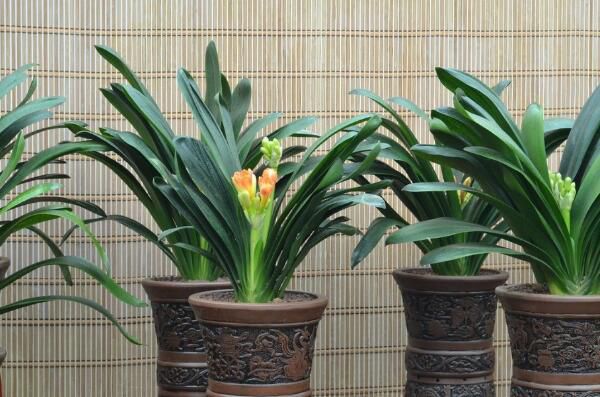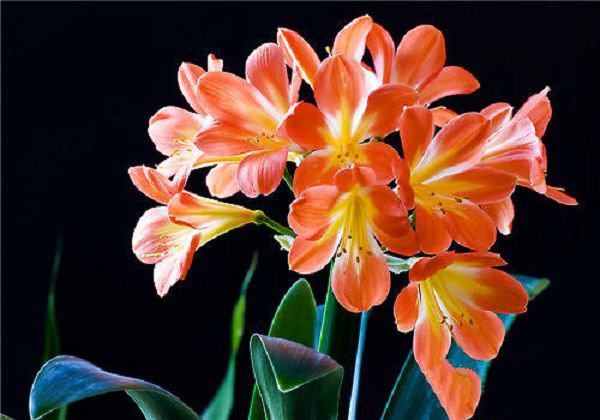Prevention and Control of Root Rot of Cymbidium in Spring and Summer
The root rot disease of Cymbidium in spring is the exuberant season for the growth of Cymbidium, but it is easy to rot due to improper management of water and fertilizer, the main reasons are as follows.
First, the water is too big: no matter it is a small seedling or a large seedling, the water should not be overwatered. If the water is big, the temperature is high, and no matter how bad the ventilation is, the root of the magnolia must rot.
Second, the soil is too raw: no matter using rotten leaf soil or horse dung soil, the nutrient soil prepared by peat soil must be fully fermented. If you put some raw soil into the basin, under the condition of high temperature, these raw soil will produce high temperature after fermentation and burn the fleshy roots.
Third, the fertilizer is not fermented well: bean cake is given to the orchid, sesame seeds and fishy water must be fully fermented. If some raw fertilizer is applied to the basin soil, it will also produce high-temperature burning fleshy roots.
Fourth, excessive fertilizer application leads to rotting roots: in particular, excessive application of chemical fertilizer can not cause excessive application of chemical fertilizer. Although it can promote the rapid growth of leaves in a short period of time, excessive fertilization can cause too much damage to fleshy roots and easily lead to atrophy and rotting roots.
Fifth, the use of poor permeability of porcelain pots, plastic pots to raise magnolia: because of poor air permeability, and the roots will be rotten.
Sixth, the temperature is too high: especially in the seedling period, the bottom temperature can be maintained at 22 ℃, but some people put the seedling pots and boxes on the hot Kang or radiator for a long time, resulting in quickly covering the roots of the seedlings.
According to the above situation, if we pay attention to prevention, the phenomenon of rotting roots of Cymbidium can be avoided. But in case you don't have a town, you don't have to worry about finding the rotten roots, just knock the plant out of the basin, cut off the rotten roots, apply charcoal or soot at the cut, and then change the soil and put on the pot again. If the fleshy roots have all rotted away, it does not matter, you can pinch off all the rotten roots, then wash the roots with clean water, and then put them in coarse sand to promote roots, and cut off part of the leaves.
The incidence of rotting root disease of Cymbidium in summer is mostly caused by the specific environment of high temperature and humidity and the lack of maintenance knowledge. For example, some people raise magnolia in porcelain pots, plastic pots or purple sand basins for the sake of beauty. After summer watering, because the permeability of the basin is poor, the air circulation is difficult, the breathing of the root is blocked, resulting in rotten roots; although some orchids are planted in the mud basin, but for fear of lack of water and fertilizer in summer, the topsoil of the basin is watered when it is dry (the actual potted soil is still wet). And often apply thick fertilizer. In the case of root breathing suffocation, thick fat and burning roots, coupled with the rapid reproduction of some harmful bacteria in summer, it will cause rotten roots.
No matter in the vegetative growth stage (from seedling stage to pre-flowering stage) or in the reproductive growth stage (after flowering), the suitable growth temperature is 5-25 ℃. Because of the lack of necessary equipment, the general family should proceed from the actual situation, in addition to taking measures such as shading, ventilation and cooling in summer with high temperature and humidity, we should strengthen root maintenance in summer from the point of view of controlling its growth (making the plant dormant or semi-dormant. This is conducive to the growth and development of other seasons). The method is:
First, to raise magnolia, you need to use a mud basin.
Second, no fertilization or less application of light liquid fertilizer in summer
The third is: control watering in summer, insist on never watering until dry. In order to prevent the summer water from stuffing the roots, the flowerpot can be buried in a large wooden box filled with wet sawdust (no watering in the basin). After that, it is often checked to see sawdust dry to supplement water spraying.
In case rotting roots occur inadvertently, they should be rescued quickly. That is, first knock out the rotten root magnolia from the basin, remove the soil, cut off the roots, wash the roots with clean water, then smear the rotten roots with potassium permanganate aqueous solution, and then wrap all the leaves with white paper, exposing the roots to the sun, basking in the sun for half an hour, using ultraviolet rays to kill germs.
After the treatment of the above methods, if only a few roots of the diseased plant rot, they can be directly planted in the sterilized nutritious soil, and the growth can be restored after less watering in the first half of the month; if more than half of the roots of the diseased plant rot or all rot away, it should be planted in a basin filled with fine sand and sprout new roots in a cool place, and the new roots will grow in about two months, and after changing the nutrient soil, normal management can be carried out.
- Prev

Plant culture is very easy to lead to rotten roots, gentleman orchid rotten roots how to do?
Plant culture is very easy to lead to rotten roots, gentleman orchid rotten roots how to do?
- Next

Gentleman orchid should pay attention to "three subtractions and one increase" in summer.
Gentleman orchid should pay attention to "three subtractions and one increase" in summer.
Related
- Is the orchid suitable for indoor use? Is it good for the body?
- How to prevent the empty root of orchids?
- What to do after the crab claw orchid is withered?
- Why are the leaves of orchids always yellow? Fertilizing and watering.
- Can the root of the gentleman orchid be saved if it is rotten?
- Diagnosis and treatment of cotton-blowing beetle insects in Cymbidium
- There is a way for a gentleman's orchid to rot.
- What is the most suitable temperature and humidity for the orchid?
- How to raise a gentleman's orchid? Cultivation techniques of Cymbidium
- How to prepare the nutritive soil for the cultivation of Cymbidium

